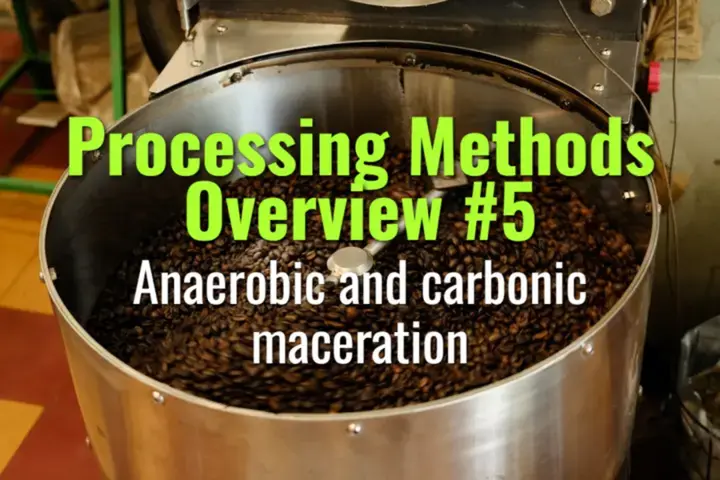Anaerobic and carbonic maceration
This topic explores the innovative coffee processing methods of anaerobic fermentation and carbonic maceration, their techniques, flavor outcomes, and significance in the specialty coffee industry.
- Coffee Basics Nerds
- 2 min read
Article 5 of 12 in Processing Methods Overview/

Anaerobic Fermentation
- Definition: Fermentation carried out in sealed tanks without oxygen.
- Process:
- Whole cherries or pulped beans placed in airtight tanks.
- Fermentation driven by yeasts and bacteria under oxygen-free conditions.
- Duration and temperature carefully controlled.
- Flavor outcomes:
- Intensified fruitiness, exotic flavors, and wine-like notes.
- Greater consistency due to controlled conditions.
- Risk of over-fermentation if poorly managed.
Carbonic Maceration
- Origin: Adapted from winemaking (notably Beaujolais wines).
- Process:
- Whole cherries placed in sealed tanks filled with carbon dioxide.
- Intracellular fermentation occurs inside the cherries.
- Often followed by drying or further processing.
- Flavor outcomes:
- Bright, juicy, and tropical notes.
- Unique aromatic complexity (bubblegum, red fruit, floral tones).
- Silky body, tea-like texture.
Advantages of Both Methods
- Push boundaries of flavor diversity in coffee.
- Allow farmers to differentiate and add value in specialty markets.
- Offer repeatable, experimental processing options.
Challenges
- Require infrastructure (airtight tanks, CO₂ systems, monitoring equipment).
- Greater risk of defects if variables are uncontrolled.
- Profiles may be polarizing for traditional buyers and consumers.
Market & Specialty Context
- Popular in specialty competitions (World Barista Championship) for their intense, distinctive profiles.
- Increasingly adopted by progressive producers in Latin America and Africa.
- Not yet widely used at scale due to costs and risk factors.
Lasting Importance
Anaerobic and carbonic maceration represent the frontier of coffee innovation, showcasing how controlled fermentation can transform flavor potential. They highlight coffee’s connection to wine science and open new possibilities for terroir expression and consumer experiences.